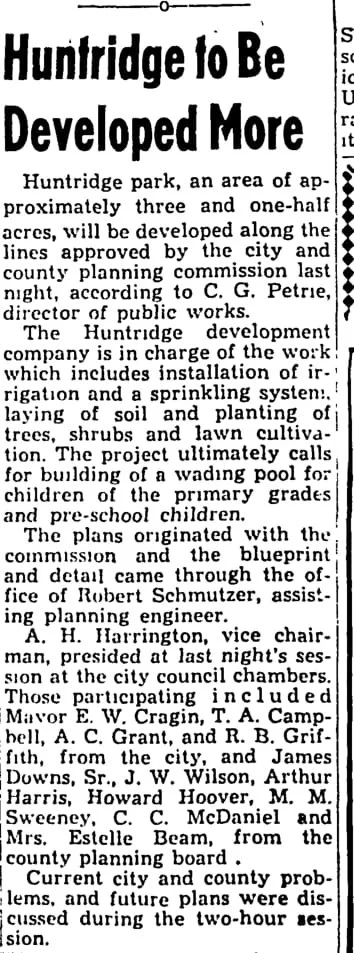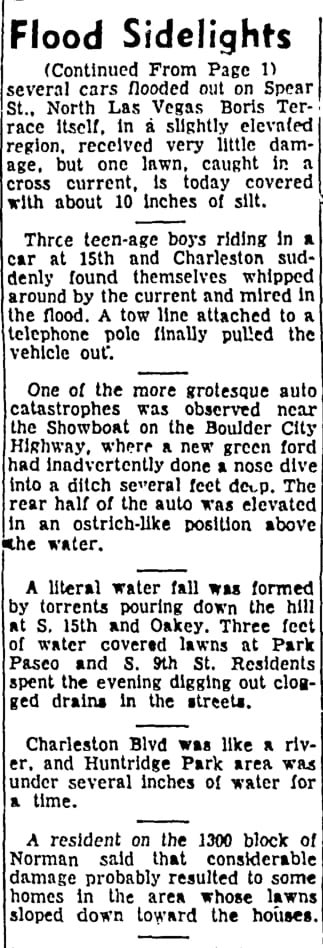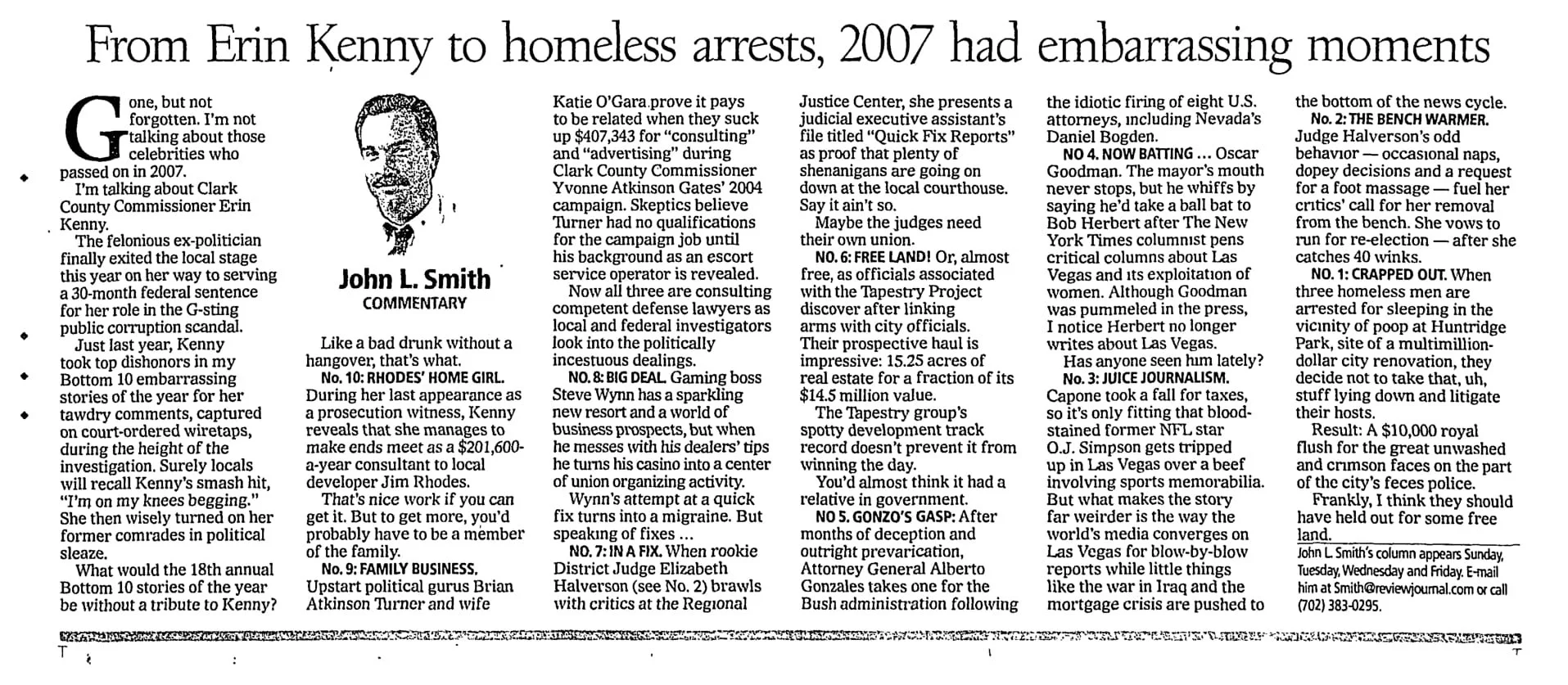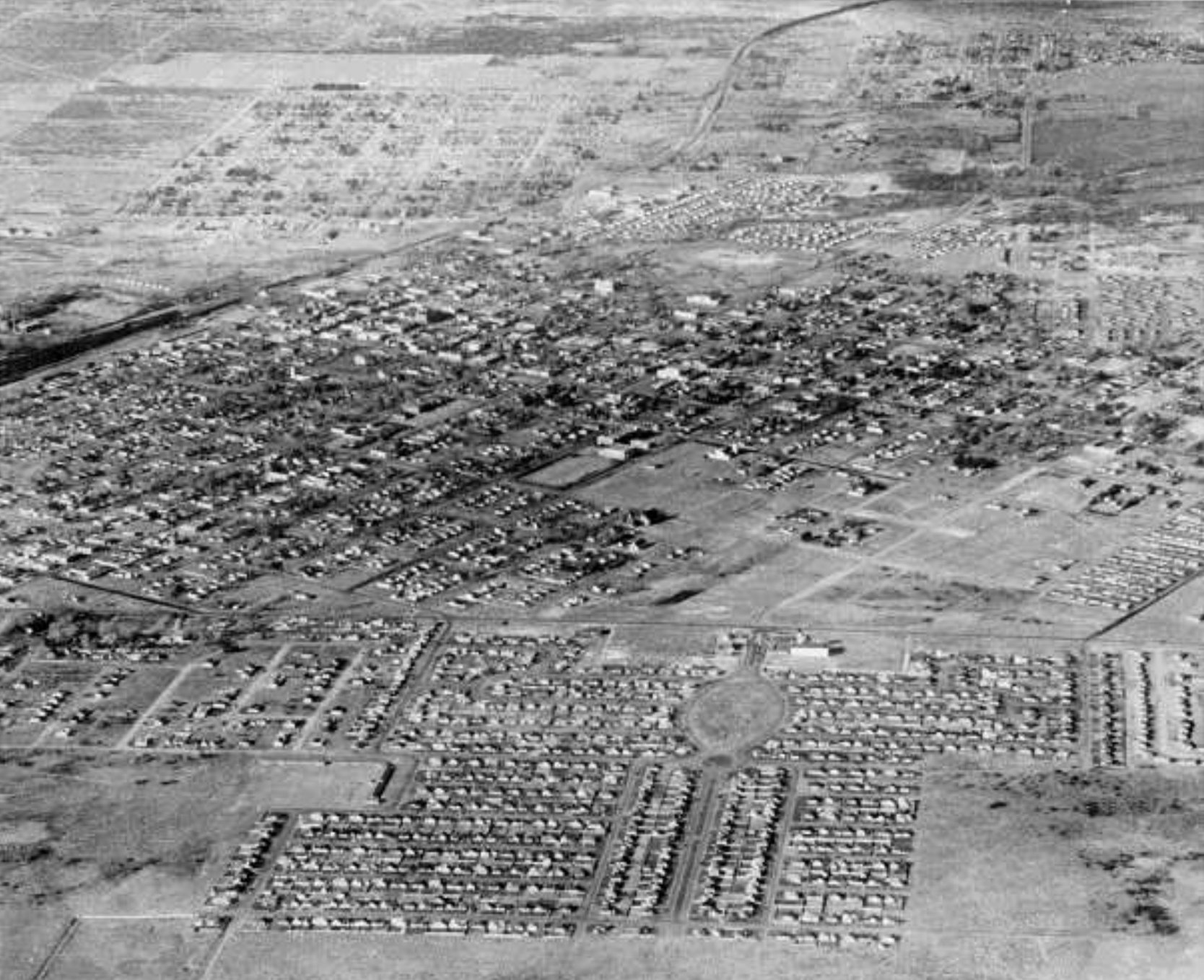More Than a Park A Legacy in Motion
From joyful neighborhood beginnings to decades of disrepair — the story of Huntridge Park mirrors the story of Las Vegas itself. Explore the turning points that shaped the space and the people around it.
Park History Timeline
(1957-Present)
js-hero-timeline
-

1944-1957: The Vision || Las Vegas's First Planned Neighborhood
• Huntridge becomes Las Vegas's first planned neighborhood with tree-lined streets
• 3.5-acre community park planned as the neighborhood's heart
• City planners C.G. Petrie and Robert Schmutzer design family-centered space
• Original features: wading pool, playground, softball diamond, shaded benches
• Park represents Las Vegas's transformation from desert town to modern city -

1957-1970: The Golden Years || A Community Thrives
• Park serves as intended gathering place for families
• Youth baseball leagues play regularly
• Political meetings and community events bring neighbors together
• Featured in city promotional materials
• Symbol of Las Vegas's recreational progress -

1971: The First Crisis || When Everything Changed
• May 1971: First drug overdose near park
• June 8, 1971: Major police raid arrests 14 people, confiscates drugs
• 100+ youth present during raid create chaos
• June 17, 1971: City Commission votes 4-0 to close park
• 58 total arrests lead to first closure after only 14 years of operation -

1971-1989: Community Resistance || The Fight to Reopen
• Vietnam veterans arrested protesting closure
• Carl Henry Olsen III and Thomas Martin Hutchinson lead resistance
• City officials develop plans for improved lighting and security
• Problems spread to nearby county parks
• Community remains divided on solutions -

1989-2007: The Lost Decades || Cycles of Failure
• Repeated attempts to reopen with security improvements
• Problems evolve from youth drug issues to adult homelessness
• Multiple closures as issues become unmanageable
• 1989: Homelessness becomes neighborhood's defining characteristic
• 35+ years of failed top-down solutions -

2007-2010: Crisis Deepens || A Neighborhood Under Siege
• 2007: "Homeless arrests at Huntridge" listed among city's embarrassments
• 2010: City rejects park for $1.2M veterans memorial due to safety concerns
• Officials cite inadequate parking, but real issue is criminal activity
• Problems now regional rather than localized -

2018-2019: Violence Escalates || The Breaking Point
• 80-year-old Shevaun shot in home one block from park
• Perpetrator was known park resident with multiple arrests
• Former Parks Commissioner David Lopez calls for decisive action
• Documented issues: bike chop shops, public bathing, drug use, needle waste
• "Residents don't need police briefings to see Huntridge struggling" -

2020-2024: Strategic Opportunity || The Moment to Act
• Maryland Parkway Bus Rapid Transit completion by 2026
• Huntridge designated key focus area for Transit-Oriented Development
• Major corridor investment bringing new residents and businesses
• City invested $1.5M in early 2000s (amphitheater, garden, playground)
• Current closure is third since 2000 -

2024-Present: Community Solutions || Friends of Huntridge Park
• Community organization formed with professional expertise
• Partnership with UNLV Landscape Architecture Program
• Proven models: Central Park Conservancy, Bryant Park transformation
• Comprehensive plan addresses both operations and capital improvements
• $2M reconstruction through private investment + existing city allocation
• 50+ years of failed closures prove need for community partnership
Where We Stand Today (Current Timeline)
-

Phase 1: Foundation Building (Current)
- Community leadership team formed (Freddy Godinez & Randy Mendre)
- Initial community presentation created
- Research completed on successful park partnership models
- Financial framework developed
- Currently: Building community support and awareness
- Currently: Working toward public-private partnership agreement -

Phase 2: Partnership Development (In Progress)
- Engaging with City of Las Vegas officials
- Building neighborhood coalition
- Upcoming: Community planning meetings
- Upcoming: UNLV partnership formalization
- Target: Partnership agreement finalization -

Phase 3: Planning & Design (Planned)
- UNLV student design charrettes
- Community input sessions
- CPTED safety design integration
- Final master plan development
- Fundraising campaign launch -

Phase 4: Fundraising (Planned)
- $2 million capital campaign
- Foundation grant applications
- Corporate sponsorship outreach
- Community fundraising events
- Private donor cultivation -

Phase 5: Construction (Future)
- Park reconstruction begins
- Community volunteer coordination
- Progress monitoring and updates
- Target: Completion to TBD -

Phase 6: Grand Reopening (Vision)
- Community celebration and park opening
- Programming implementation
- Ongoing community management begins
- Model for other Las Vegas neighborhoods
The Pigeon Man: A 1989 Window into Huntridge's Transformation
How a piece of local fiction revealed the human cost of abandoning public spaces
The Story Behind the Story
In October 1989, Las Vegas Review-Journal columnist John L. Smith published a piece of weekend fiction titled "Pigeon man." On the surface, it was a simple story about an elderly homeless man who fed pigeons in what appears to be the Huntridge area. But for those who understand the neighborhood's history, this story represents something much more significant: the moment when homelessness became part of Huntridge's cultural identity
A Glimpse into 1989 Huntridge
Smith's fictional narrative paints a picture of the Huntridge area 18 years after the park's first closure in 1971. The details are telling:
The Setting:
A man experiencing homelessness is living rough in the neighborhood
"Filtered spring light," suggesting tree-lined residential streets
References to "storm windows" and maintained woodwork indicate some residential stability
A "Fresh Market downtown" showing commercial activity still existed
Pigeons gathered in public spaces where people congregated
The Character:
An elderly man who has made feeding pigeons his daily routine
Someone who has found a way to create purpose and connection despite difficult circumstances
A person the community recognizes but doesn't quite know how to help
What This Tells Us About the Timeline
The Transition Period (1971-1989)
Smith's story helps fill a crucial gap in our understanding of what happened to Huntridge between the dramatic 1971 closure and the crisis-level homelessness documented in the 2000s.
By 1989, the pattern was already established:
The park closure had not solved the underlying issues
People experiencing homelessness were finding ways to survive in the neighborhood
The community was developing a complicated relationship with these residents
Individual stories of hardship were becoming normalized
From Youth Crisis to Adult Homelessness
The evolution is clear:
1971: Youth drug problems and "teenage hangout"
1989: Adult homelessness and survival stories
2007-2019: Encampments, violence, and neighborhood siege
The pigeon man represents the middle phase, when isolated individuals experiencing homelessness were becoming part of the neighborhood's daily reality.
The Human Cost of Failed Policy
What the Pigeon Man Symbolizes
Smith's character embodies what happens when cities abandon public spaces rather than address underlying problems:
Lost Potential:
Someone who has the capacity for routine, care, and community connection
A person who has found a way to create meaning (feeding the pigeons) despite having few resources
An individual who might thrive with appropriate support and programming
Missed Opportunities:
No formal programs or outreach to connect him with services
No public spaces are designed to accommodate people experiencing different types of housing situations
No community programming that might channel his obvious care for animals into positive volunteer opportunities
Systemic Failure:
After 18 years since the park closure, the city still had no effective solutions
Problems had evolved but fundamental approaches hadn't changed
Individual human stories were becoming background noise rather than calls to action
Why This Matters for Today's Advocacy
Learning from the Past
The pigeon man's story illustrates exactly what the Friends of Huntridge Park are working to prevent:
The Cost of Abandonment:
When we abandon public spaces, we abandon the people who need them most
Individual stories of survival become normalized rather than addressed
Problems evolve and compound over decades without intervention
The Potential for Connection:
The pigeon man found ways to create routine and purpose
He had the capacity for care and community connection
With proper programming and support, he might have become a park volunteer, a community elder, or a bridge between housed and unhoused residents
A Different Vision
The Friends of Huntridge Park approach offers what was missing in 1989:
Community-Centered Solutions:
Programming that creates opportunities for everyone to contribute
Outreach that connects people with services rather than just moving them along
Spaces are designed for community building rather than exclusion
Learned Experience:
35 years of evidence that closing spaces doesn't solve problems
Proven models from other cities show what works
Professional expertise in both landscape architecture and social services
From Fiction to Action
Why the Story Matters
The pigeon man story matters because it captures a moment when Huntridge's transformation was still individual rather than systemic, when intervention might have prevented the escalation that followed.
It reminds us that:
Every person experiencing homelessness has a story and potential contributions
Community spaces should serve everyone, not just some people
Early intervention prevents larger crises
Fiction often reveals truths that news reporting misses
The Choice We Face
Today, we can choose:
Continue the Pattern:
Close the park and hope problems disappear elsewhere
Accept that some community members don't deserve public space
Wait for individual stories to become systemic crises
Or Break the Cycle:
Create community programming that includes everyone
Design spaces that welcome rather than exclude
Build the support systems that were missing in 1989
Final Thoughts: Honoring the Pigeon Man
The elderly man feeding pigeons in John L. Smith's 1989 story represents all the missed opportunities of the past 35 years. He deserved better than surviving on the margins of a community that didn't know how to include him.
Today's Friends of Huntridge Park advocacy honors his memory by insisting we can do better.
We can create spaces where someone like the pigeon man might find not just survival, but a sense of community. His knowledge of birds and neighborhood patterns might make him a valued volunteer naturalist, where his daily routines might become part of community programming rather than just individual survival.
We owe it to his memory—and to everyone who will come after—to finally break the cycle of abandonment and create the inclusive community space that Huntridge has deserved for over 50 years.
The pigeon man's story reminds us that behind every policy decision are real people with real lives. The question is whether we'll continue to see them as problems to be managed or as community members with contributions to make.


